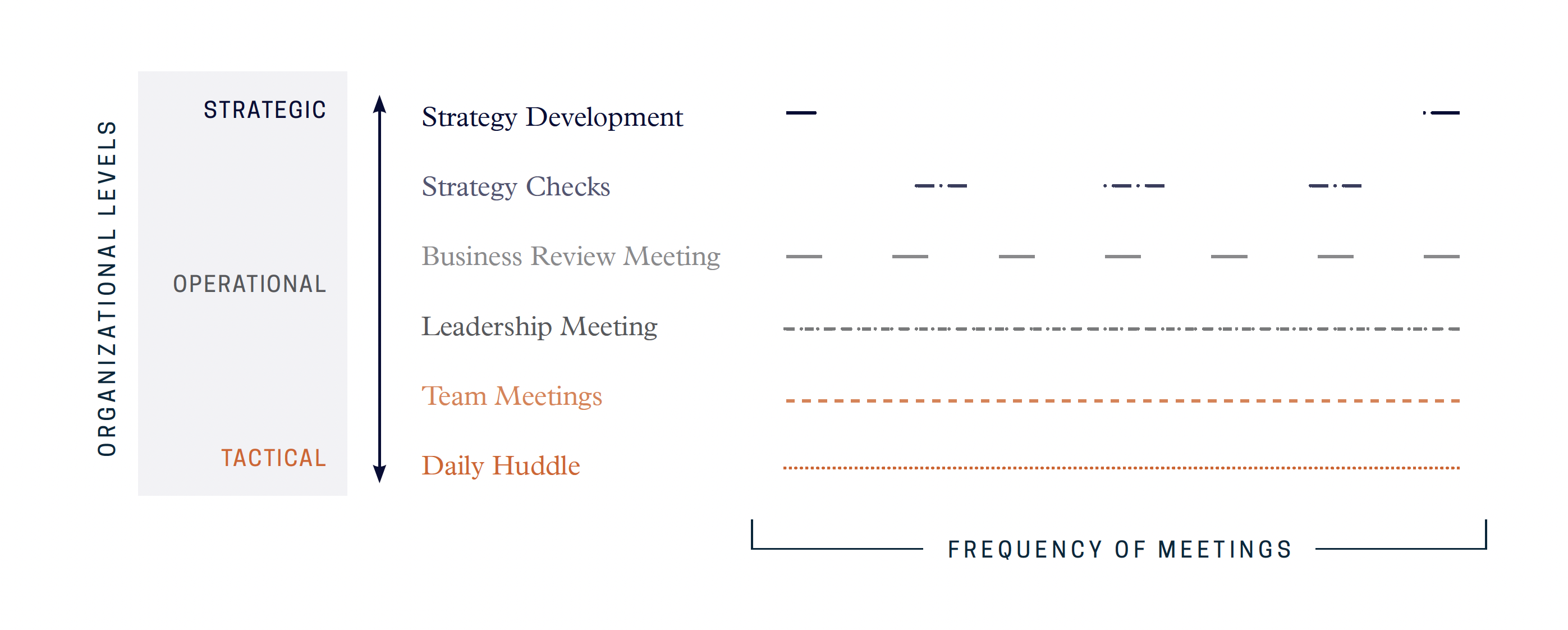Does your team need to relook at the way you are working together? Review our Operating Rhythm guidance to gain a deeper understanding of and look for changes to the habitual cadence in which your team meets, shares information, and disperses to actually get work done. Focus in on the right cadence to connect your team with the right information at the right time.
While sharing the right information is vital to connect with your teams, it’s just as important to focus on the frequency of your messages. Every team has an operating rhythm – the habitual cadence in which the team meets, shares information and disperses to get work done – but most of these rhythms happen by accident.
It is particularly easy for teams in today’s challenging environment to fall into a convenient, but suboptimal rhythm. You need to keep a pulse on your team’s operating rhythm and routinely fine-tune the cadence to match the speed of the environment, making sure that everyone, regardless of where they work, is staying connected and receiving the essential information they need when they need it.
Here are two questions your teams should ask themselves, as they are developing your operating rhythm:
1. “How fast is our environment changing?”
Leaders often overlook this question. While an operating rhythm is a series of internal processes, we should model those internal processes to keep pace with the external environment. Circumstances may dictate the exact frequency that suits your team, knowing that you cannot design an operating rhythm until you look outward and answer, “What outcomes should my operating rhythm enable?”
When we work with private partners, the answer often revolves around empowering their front-line leaders to act with greater autonomy, enabling those closest to the problem to solve it, or those nearest to the opportunity to capitalize without asking for permission.
2. “Currently, how quickly can our organization adapt to change?”
This question prompts leaders to look internally, asking for an honest assessment of an organization’s current structures, processes, and behaviors.

Here’s how you should think about the strategic, operational, and tactical decisions in your organization:
- Shape the operating rhythm through select meetings that convey clear and actionable strategic intent. The least frequent of the three strategic meetings shape the organization by providing high-level, senior-leader plan that cascades to comparatively junior teammates. These teammates interpret, operationalize, and translate that strategic guidance for their teams throughout the organization.
- Monitor the organization’s pulse and maintain momentum with informed operational syncs. These meetings must be a two-way street flowing strategic intent down to teams and bubbling up front-line reports to their superiors in a digestible format that respects a senior leader’s limited time.
- Outpace the organization’s external environment by empowering front-line teams with tactical guidance, resources, and support. By creating a culture of communicate, teams can outpace their environments.
For more in-depth insights for how to leverage establishing an effective operating rhythm to build intentional leadership, download our Way to Work Playbook below.




